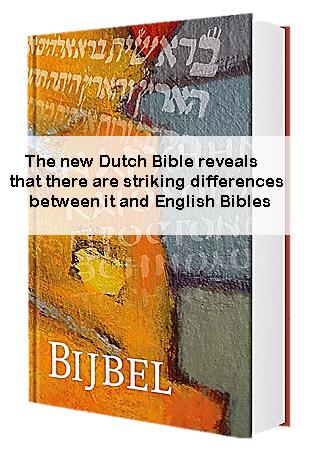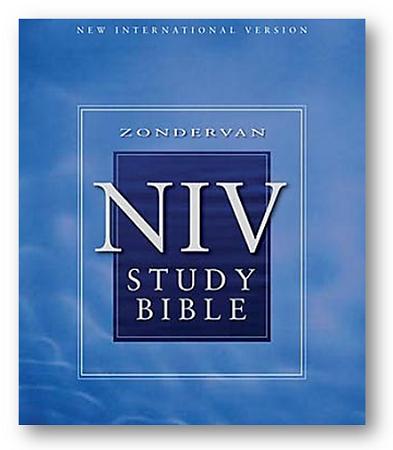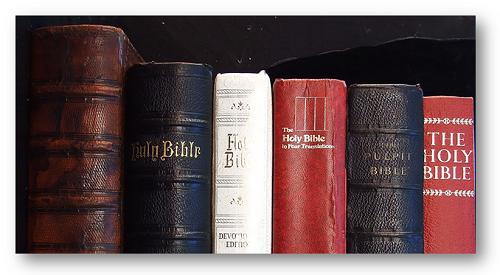The New Dutch Bible and the International Reformed Community
The New Dutch Bible and the International Reformed Community

It was reported in a recent issue of this magazine that the Reformed Churches (Liberated) in the Netherlands have adopted a new translation of the Bible.1 The last major Dutch rendition had appeared in 1951; after fifty years of service, it was becoming obsolete. At the 1990 Synod it was decided to encourage the Dutch Bible Society (NBG), which had initiated the inter-confessional project, to produce a version that reflects the fact that for centuries the translated Bible has functioned within a confessional denomination.
In the years preceding publication, the team of translators formulated and enacted clear theories of translation, and involved both the general public and experts. While remaining faithful to the source text, the new Dutch Bible was to be understood easily by modern readers. Generally speaking, both experts in the language and general users judge the new translation up-to-date and highly readable.
The publication of a new Dutch Bible may not seem relevant to English-speaking Reformed and Presbyterian believers, but it is important for several reasons. Since the translation of Scripture is bound up closely with the interpretation and application of it, the new edition should interest all those who enjoy ecclesiastical fellowship with Dutch-speaking Reformed churches. The translated Bible is accepted as the only rule of faith; it is the final arbiter in discussions of doctrine and practice.
The new Dutch version is relevant to non-Dutch readers also because it reflects trends in translation that are world-wide. Those who will employ the next generation of the Bible in another language will wish to know how current theories of translation are practiced in this edition. While different languages possess different mechanisms of translation, the theories are global; future English editions will advance or react to the translation theories that are effected in the new Dutch Bible.
Even a brief consideration of the new Dutch Bible reveals that there are striking differences between it and English Bibles popular throughout the international Reformed community. Not only the neo-conservative New King James Version (NKJV) and English Standard Version (ESV), but also the New International Version (NIV) differs with the NBV in several premises. It is the purpose of this article to summarize the most important differences in the principles of the Dutch translation and the cited English ones, and to illustrate them by means of examples that can be grasped by a reader not trained in the ancient languages or theories of translation.
Features of the Language⤒🔗
One current theory evident in the Dutch translation is to distinguish features of language from features of text. Features of language are characteristics peculiar to a language, whether it be French, Korean, or ancient Greek. Think of the double negatives in Afrikaans, for example. If the translation repeats the peculiarities of the language in which a text is composed, it produces nonsense, or at least it appears awkward or foreign. The awkward quality, however, does not occur in the original, and so the translation fails.
A simple illustration may suffice to demonstrate how features of language recur in translation. To express the highest (superlative) degree, Hebrew commonly repeats a word: “Holy of Holies” (Ex.26:33). The meaning of this expression may not be clear to an English speaker who is unaware of this Hebrew idiom; “the most holy place” clearly conveys the meaning, though not the exact words. According to the theory behind the new Dutch Bible, the reader should not have to stumble over such Hebraisms, or require an explanatory footnote. After all, the peculiarities are merely characteristics of the language in which the source-text was written. Unlike a word-for-word translation, the NBV does not replicate the language in which the original document was penned.

Features of the Text←⤒🔗
Features of the text are words, phrases, and stylistic elements that are unusual or remarkable even in the original language. For example, a love-poet may employ words, phrases and elements of style that are not used every day: “your eyes are doves ... your hair is like a flock of goats” (Song of Songs 4:1). The poet uses striking comparisons to express his emotions. By contrast, the historian begins his Gospel in the deliberate manner of Greek history-writing: “inasmuch as many have undertaken to compile a narrative of the things that have been accomplished by us...” (Luke 1:1, RSV).
These differences in vocabulary, tone, and other elements of style are due to the fact that the authors wrote in different kinds, or genres, of literature. Every genre of literature is defined by certain characteristics of text, and these characteristics should be evident in translation also. The book of Proverbs is wisdom-literature; the second Letter of Peter reads like a rhetorical testament. More than earlier versions, the new Dutch Bible reflects the generic features of the various original compositions.
The translation of the book of Esther, to use another example, reflects the strange vocabulary of the original. Written like a novel, Esther includes many Persian loan-words that convey the local colour of Susa, the Persian capital. In 1:6 the luxury of the draperies is expressed by the ‘expensive’, foreign word, “byssus” (a very fine “cord of white linen”, NIV). The Dutch translation maintains this word, which is explained in a word-list at the back of the book. Not only the diction of a particular book or passage, but also its structure is revealed in the translation. For the same reason the translation adheres less to the customary divisions of passages; rather, it duplicates the verbal markers of beginning, middle and end in order to reveal the coherence in the original account. These are no doubt advancements in Bible translation, for they convey more accurately the structure and tone of the original document.
For translators who prefer fidelity to the source text over that of the source language the challenge is to determine when an author uses features of the language to express a special meaning or tone. Composing a good literary text (whether it be poetry, epistle, or historiography) involves using the features of the language in order to communicate a unique meaning. In other words, the modern translator must be sensitive to the characteristics of language and the way in which an author employs them precisely because the inspired author is using a feature of language intentionally. In my view, the new Dutch Bible has not always accounted fully for this role of the features of language.
Not Necessarily Word-for-Word←⤒🔗
Many English Bibles, including the recently published English Standard Version, aim to provide essentially literal translations, that is, word-for-word correspondences. Consequently, the form of the English sentence is determined by that in the original document. Unlike the ESV (and NKJV), the new Dutch Bible does not translate each and every word in the original text into a word in the target language. Indeed, not even a word that recurs in a passage is necessarily translated by the same word into Dutch. This practice reflects the current theory that it is not always accurate to translate a word with the same word time and again. Should the original word be used as a motif or recurring concept, it may be translated into Dutch by a different, nearly synonymous word. To put it differently, the new Dutch Bible does not strive for formal equivalence in the features of the language; instead it identifies the function of the words, rhythm, sentence-structure, etc., and seeks to reproduce that function in the target-language

The Function of the Original Text←⤒🔗
The NIV Bible read by many Reformed believers around the world is based on the translation theory known as dynamic equivalence. The first word in this phrase, “dynamic”, points to the theory’s emphasis on the impact or effect that a text has on the reader. The second word, “equivalence”, means that the impact or effect of the modern text should be the same as that of the Hebrew or Greek original on its first readers. Simply put, a dynamic-equivalent translation seeks to move the modern reader in the same way as the ancient reader was.
In recent years this dynamic-equivalent theory has lost favour, for two reasons. First, scholars have realized that it is very difficult to determine from the original text how the ancient Hebrew or Greek reader was affected; secondly, it is also nearly impossible to determine how a modern reader will react to a text in his language. To put it in other words, there are severe limitations to a translation method that relies too much on the social context in which a document is composed and read. Realizing this weakness, translators have moved away from focusing on the relation between language and society to the text proper.
The new Dutch Bible is premised on the theory called “function-equivalent”, which places less stress on the response of the reader, and more on the purpose or intent of the original text. While I see the shift as promising, the emphasis on function produces challenges of its own. For when the translator views his task as rendering the function of the text in the translation, he may produce a result that goes beyond, or restricts, the meaning of a passage, phrase, or word.
Translation as Explicit Interpretation←⤒🔗
This brings us to another feature of current theory related to Biblical interpretation, namely, choosing a specific translation that permits one explanation. The goal of this approach is to make explicit in the target-language an element that may be merely implied in the source text. Since something is understood by the readers of the original text because their culture would have assumed it, the translation must make the thing explicit for the modern reader who lives in a different cultural setting. In other words, if the translation does not state clearly that which is assumed in the original, then some meaning is lost. A simple and beguiling example illustrates how this theory functions, and also how it may result in a free or overly-specific translation.
Joshua 7 records the sin of Achan and Israel’s violation of the covenant. When Achan’s sin is exposed and his admission given, the elders retrieve the devoted things and, the Hebrew states, “spread them out before Jahweh” (Joshua 7:23). The new Dutch translation interprets the words in a specific way and states that the devoted things were deposited “before the ark”. Relying on the context of the entire episode, the phrase harks back to verse 6 of chapter 7, in which is stated that Joshua, distraught with the defeat at Ai, fell “before the ark”. Now the covenantal emphasis effected by the symbol of the ark is a very attractive interpretation, but the original Hebrew text makes no mention, in verse 23, of “the ark”. The translators have made one plausible exegesis of the words “before Jahweh” more explicit by having the devoted things deposited before the ark; a graphic action, if only the original text had it so.
This example shows that the considerable challenge in this process is understanding what is implied (but not stated) by the original text, and accurately rendering it in explicit terms in the modern language. This practice, while being a bold striving for clarity and directness in the target language, hides the fact that the meaning of the original word is not as certain as may appear from the new text. In fact, an author may employ purposeful ambiguity in expressions precisely in order to convey a range of meanings: the devoted things were placed before Jahweh, perhaps before the ark of His covenant. Especially when a theological point is at stake, such interpretative translation may amount to a suppression or exaggeration of a doctrinal point that may be abused in the churches’ teaching. In my view, then, the translator who over-explicates the original words by means of translation has assumed the task of the exegete.

Inclusive Language←⤒🔗
A characteristic of any language is that its vocabulary reflects social values, including male and female relations. In the Greco-Roman culture, words like “man” (anthropos) and “brothers” (adelphoi) did not necessarily exclude “woman” and “sisters”. Modern readers understand that while such terms reflect the social realities and biases of the time, they are employed often (though not always) by the biblical writers to mean people of both sexes. For example, when the original Greek states “any man”, it may mean “any one”.
When the Greek text states “brothers”, therefore, the new Dutch translation adds “and sisters” where appropriate, as in 1 Corinthians 1:10, 26 (etc.). In the Dutch text of Psalm 133:1 only the term “brothers” appears because the theme of unity is expressed by the example of the (male) priests. On occasion, however, the Dutch translation is awkward due to an over-emphasis on inclusive language. In 2 Peter 1:7 “brotherly love” appears as “love for the brothers and the sisters” (in Dutch) twice in one verse, so that more attention is drawn to the matter than the original text intends.
It should be noted also that translations used by most English-speaking Reformed and Presbyterian churches vary in the use of inclusive language. On the grounds of transparency to the original text, the NKJV and ESV retain the gender-specific terms - although the ESV repeatedly explains the inclusion of females in footnotes. The New International Version (NIV), which had appeared in 1978 with gender-specific language, has been available as gender-neutral since 2002.
The Prefaces to the Bible Books←⤒🔗
The “Guidelines for Inter-confessional Cooperation in Translating the Bible” (1993) state that the translation should not be burdened with ideological overtones, but convey the original text directly. They also state that outlines explaining the structure and major themes of each book may be used as prefaces. In my opinion, the new Dutch Bible errs when it provides prefaces that include ideas which conflict with what is stated in the Bible text that follows, thereby colouring the reading of that text with a notion opposed to Scripture itself. For example, while 2 Peter 1:1 states that the apostle Peter is the author, the introduction to this letter relates the alternative viewpoint that the authenticity of this book has been discounted. So too for Paul’s Letter to Titus (cf. 1:1), for which the view is presented that it was composed by an author only purporting to be Paul. The brief introductions thus may prejudice the reading of a book by stating (and not proving) claims to which a denomination that professes the inerrancy of Scripture does not adhere.
Conclusion←⤒🔗
This brief review of the principles and practices in the new Dutch Bible illustrates the close connection that exists between translation and interpretation. It also underscores the value of reflecting critically upon contemporary principles of translation and their influences through translated texts. One recent critical review of the new translation posed the question whether the principles behind the NBV are compatible with those of the Reformed faith as expressed at the Synod of Dordt in 1618. In an era when biblical exegesis is undergoing considerable re-orientation, Reformed and Presbyterian churches world-wide must continue to advance biblical hermeneutics that are grounded in the Scriptures. For the harmony in the Reformed international community rests in the Bible. Closer collaboration between Reformed and Presbyterian churches in matters of exegesis and doctrine also will strengthen common enterprises, such as mission, by grounding them more firmly in the teachings of Scripture. Moreover, these federations should provide a united biblical and confessional perspective on the interpretation of Scripture that may benefit not only the international scholarly communities but also the world-wide Christian faith.

When a federation of churches adopts a new rendering of the Bible, it implicitly adopts the theories of translation and interpretation that come with it; the next generation of readers will be affected by the principles that are practiced in the modern edition. The adoption of the NBV by the Reformed Churches (Liberated) in the Netherlands offers an opportunity to believers in sister-churches (English, Korean, etc.) to re-evaluate the strengths and weaknesses in the principles and methods of the translated Bible they employ. Whatever the diversity that exists among Reformed and Presbyterian churches world-wide, the final judge in matters of doctrine and practice are not the words of man but the words of God, the Bible. Therefore we may derive comfort from the words of Isaiah 40 quoted in 1 Peter 1:24-25, “all men are like grass, and all their glory is like the flowers of the field ... but the word of the Lord stands forever”.

Add new comment